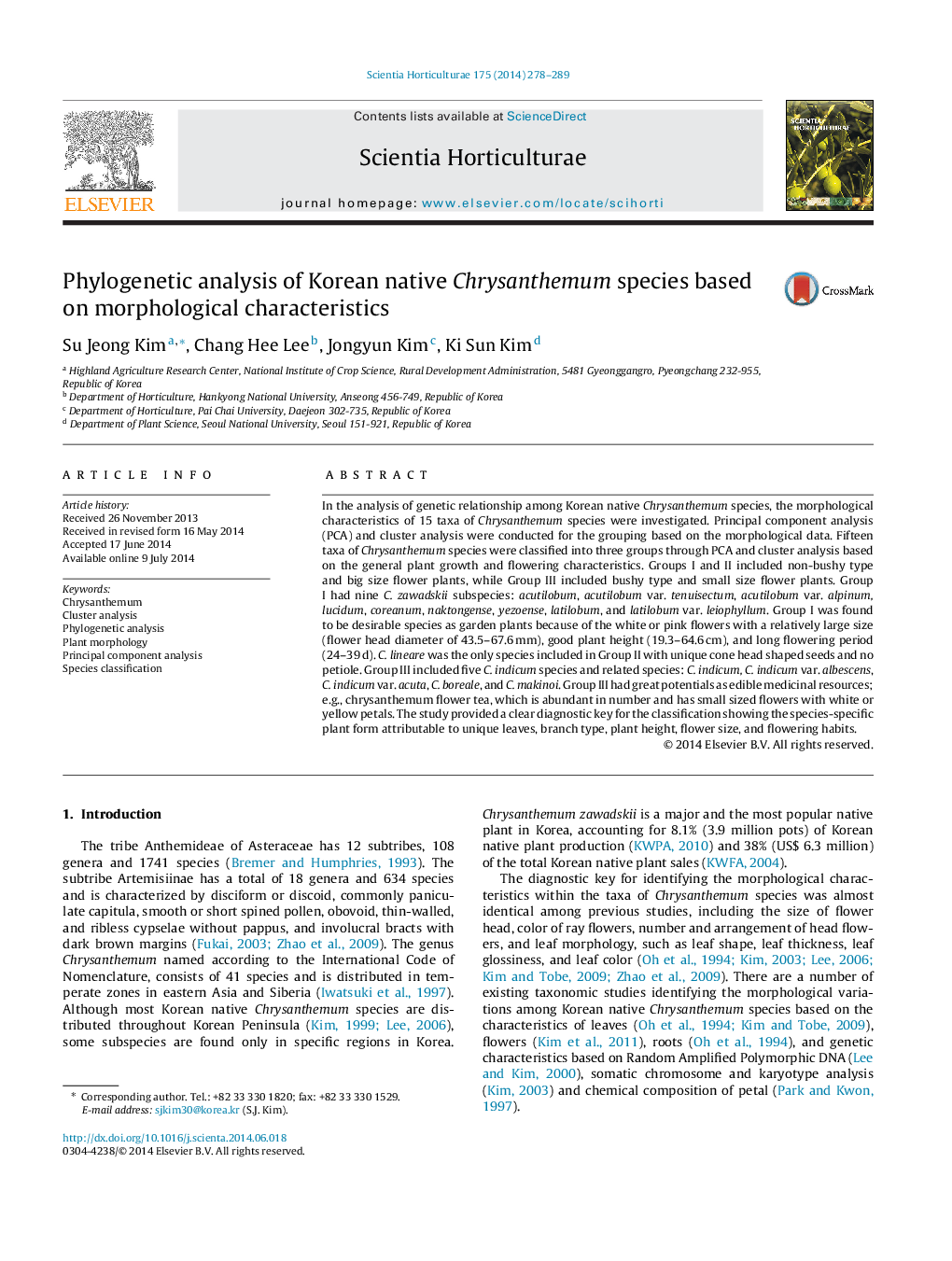| کد مقاله | کد نشریه | سال انتشار | مقاله انگلیسی | نسخه تمام متن |
|---|---|---|---|---|
| 4566680 | 1628823 | 2014 | 12 صفحه PDF | دانلود رایگان |
• Genetic diversity of Korean Chrysanthemum species was studied through multivariate analysis.
• Morphological characteristics of 15 taxa were used for the characterization of diversity.
• Principal component and cluster analysis classified the 15 taxa into 3 groups.
• Clustering reflected the morphological traits of leaf shape, branch type and flowering habits.
In the analysis of genetic relationship among Korean native Chrysanthemum species, the morphological characteristics of 15 taxa of Chrysanthemum species were investigated. Principal component analysis (PCA) and cluster analysis were conducted for the grouping based on the morphological data. Fifteen taxa of Chrysanthemum species were classified into three groups through PCA and cluster analysis based on the general plant growth and flowering characteristics. Groups I and II included non-bushy type and big size flower plants, while Group III included bushy type and small size flower plants. Group I had nine C. zawadskii subspecies: acutilobum, acutilobum var. tenuisectum, acutilobum var. alpinum, lucidum, coreanum, naktongense, yezoense, latilobum, and latilobum var. leiophyllum. Group I was found to be desirable species as garden plants because of the white or pink flowers with a relatively large size (flower head diameter of 43.5–67.6 mm), good plant height (19.3–64.6 cm), and long flowering period (24–39 d). C. lineare was the only species included in Group II with unique cone head shaped seeds and no petiole. Group III included five C. indicum species and related species: C. indicum, C. indicum var. albescens, C. indicum var. acuta, C. boreale, and C. makinoi. Group III had great potentials as edible medicinal resources; e.g., chrysanthemum flower tea, which is abundant in number and has small sized flowers with white or yellow petals. The study provided a clear diagnostic key for the classification showing the species-specific plant form attributable to unique leaves, branch type, plant height, flower size, and flowering habits.
Classification of Korean native Chrysanthemum by morphological characteristics.Figure optionsDownload as PowerPoint slide
Journal: Scientia Horticulturae - Volume 175, 15 August 2014, Pages 278–289
